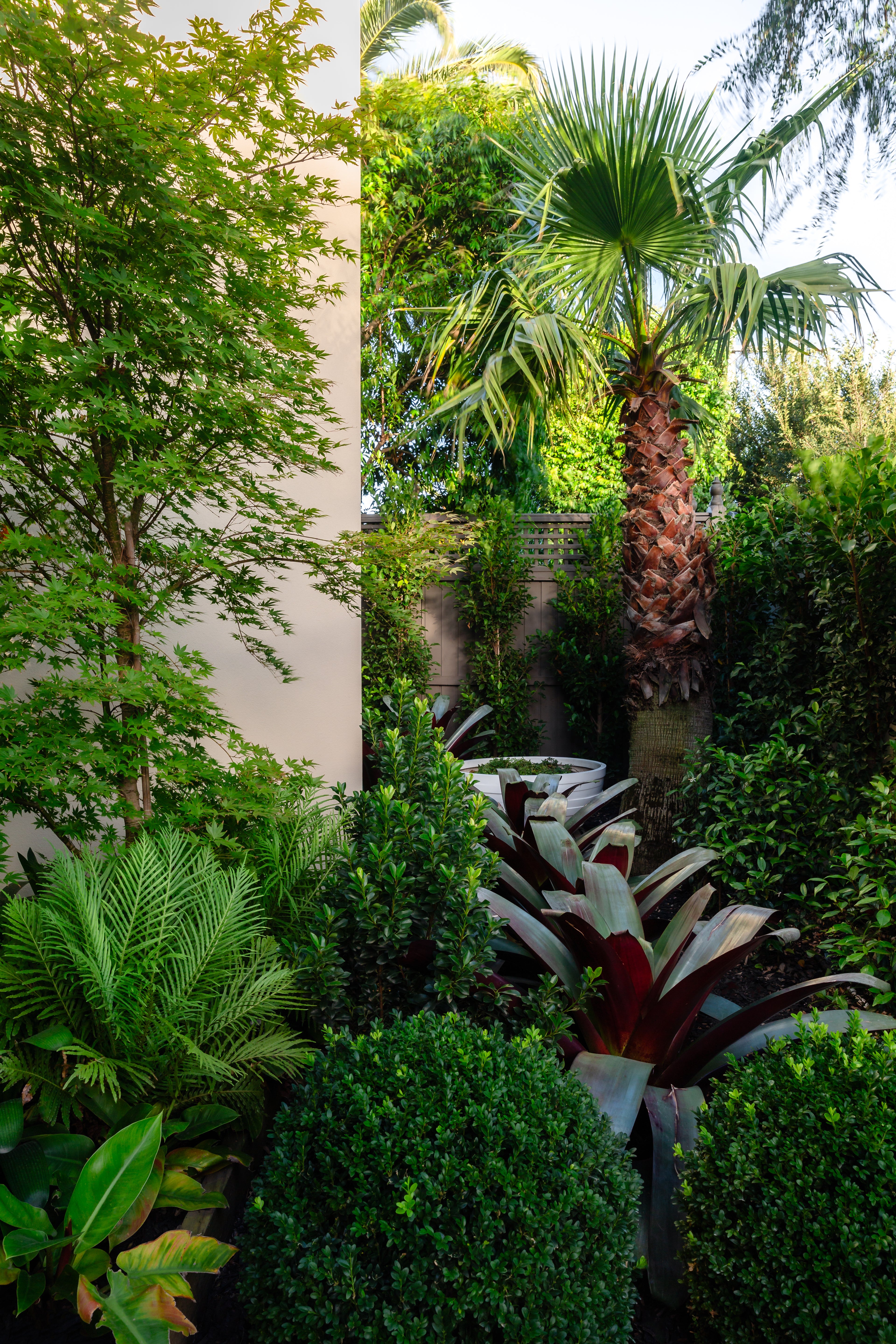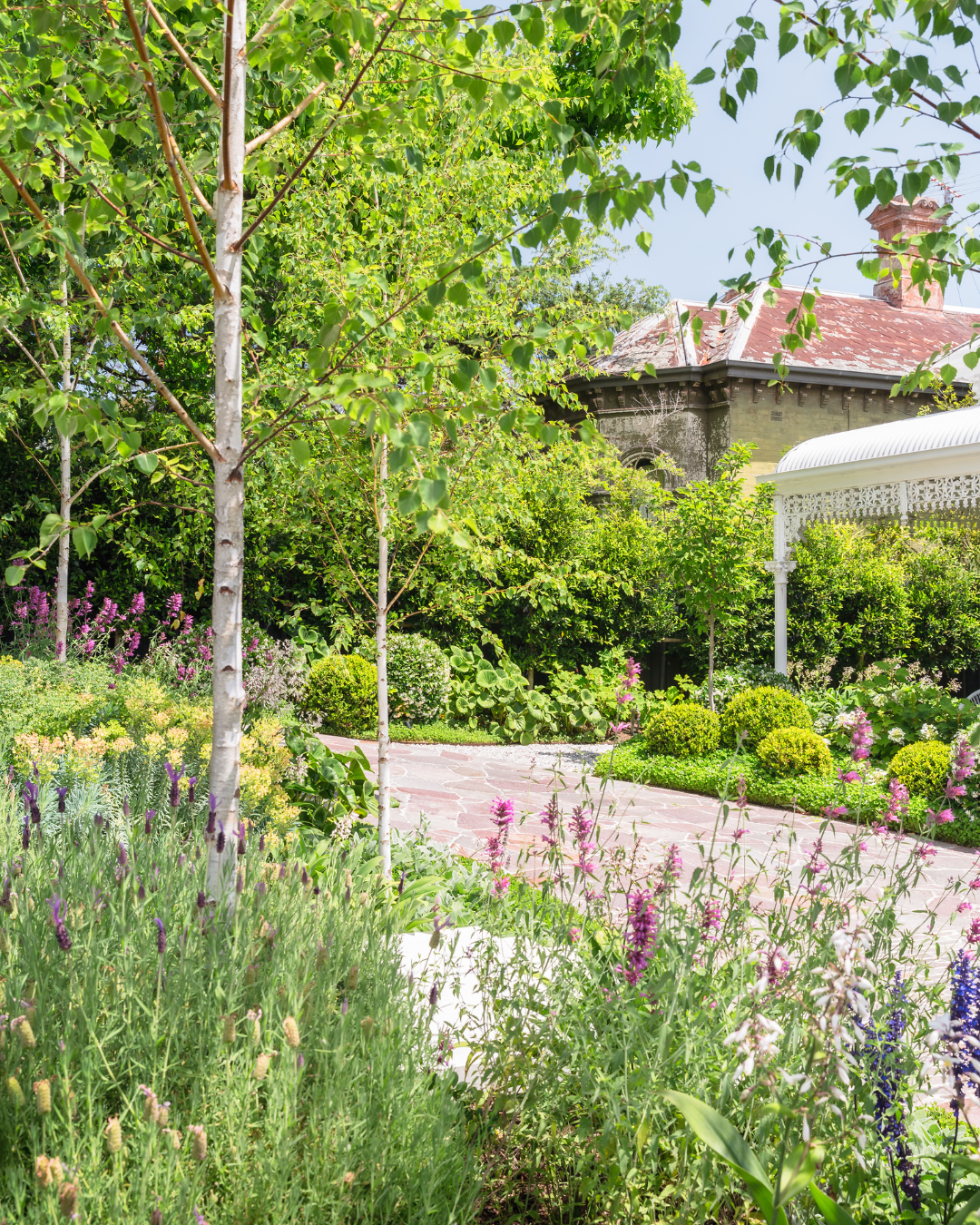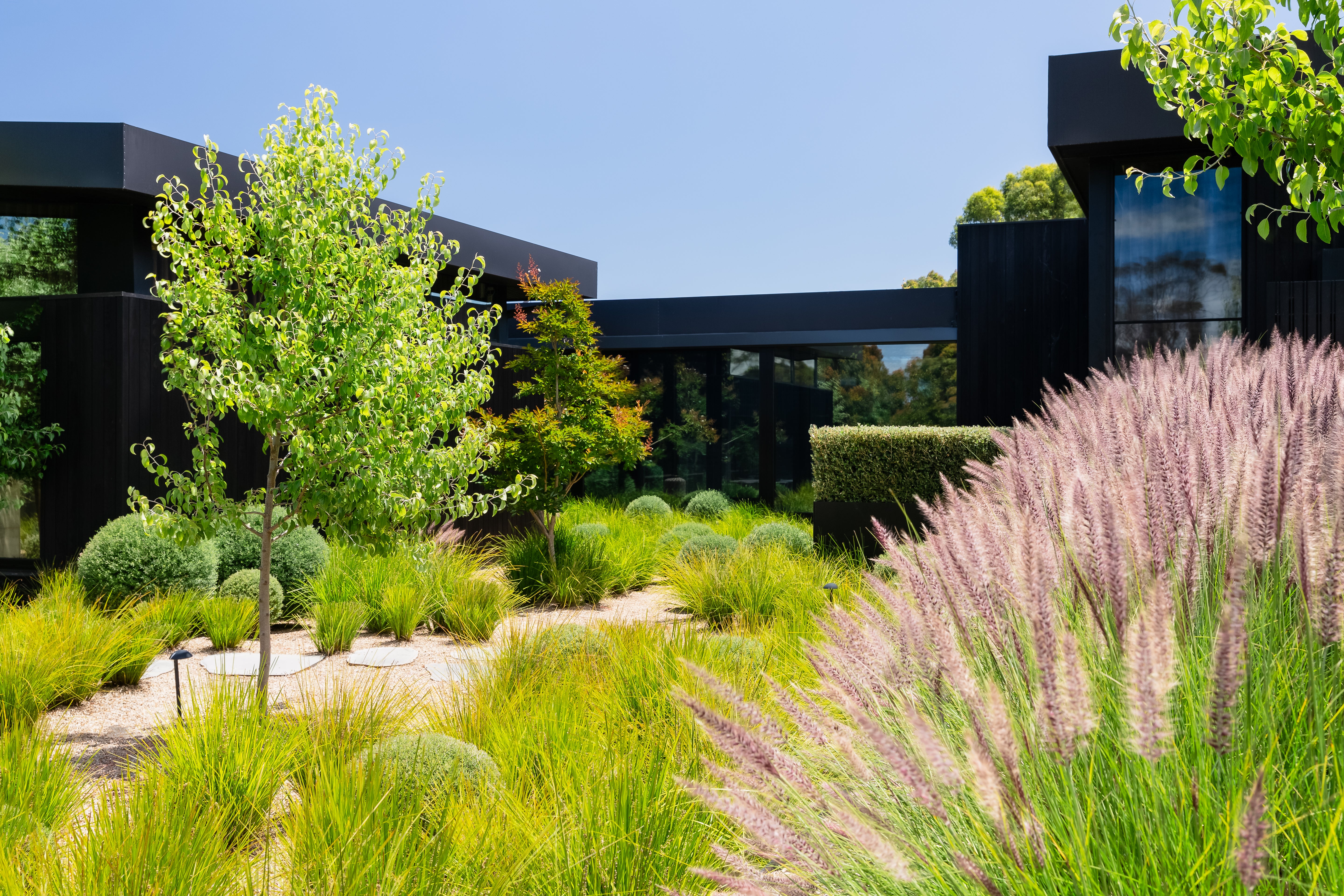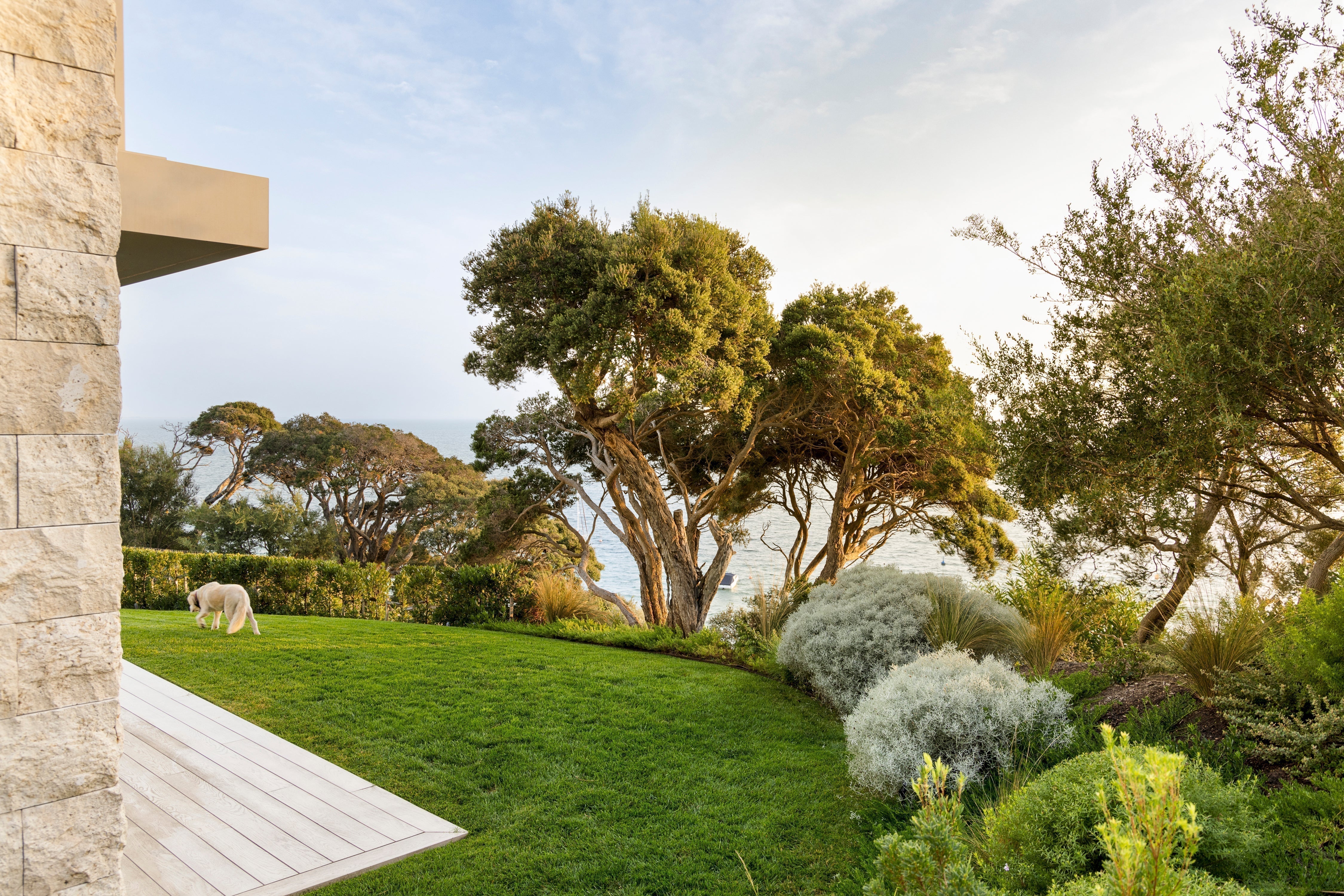
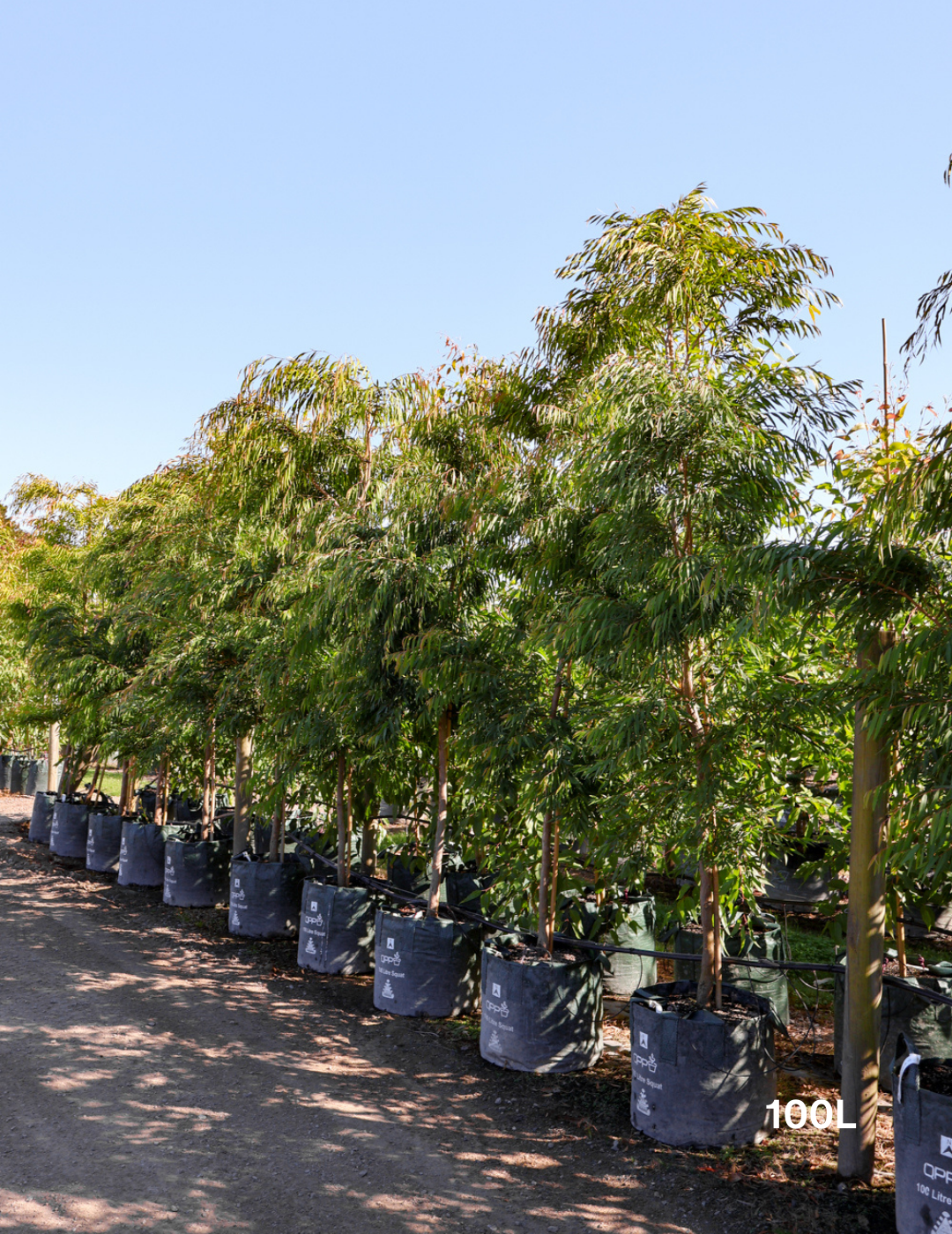
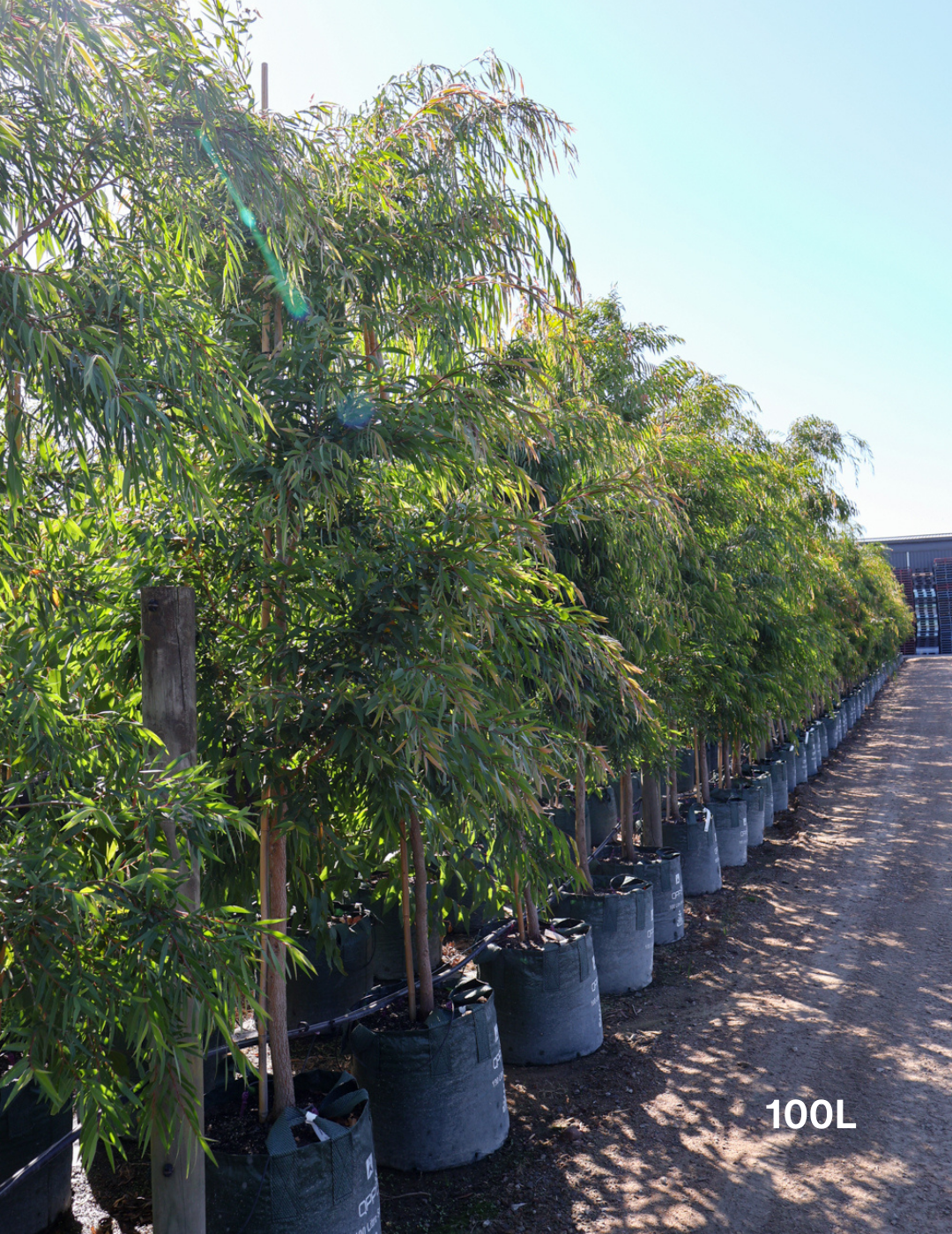
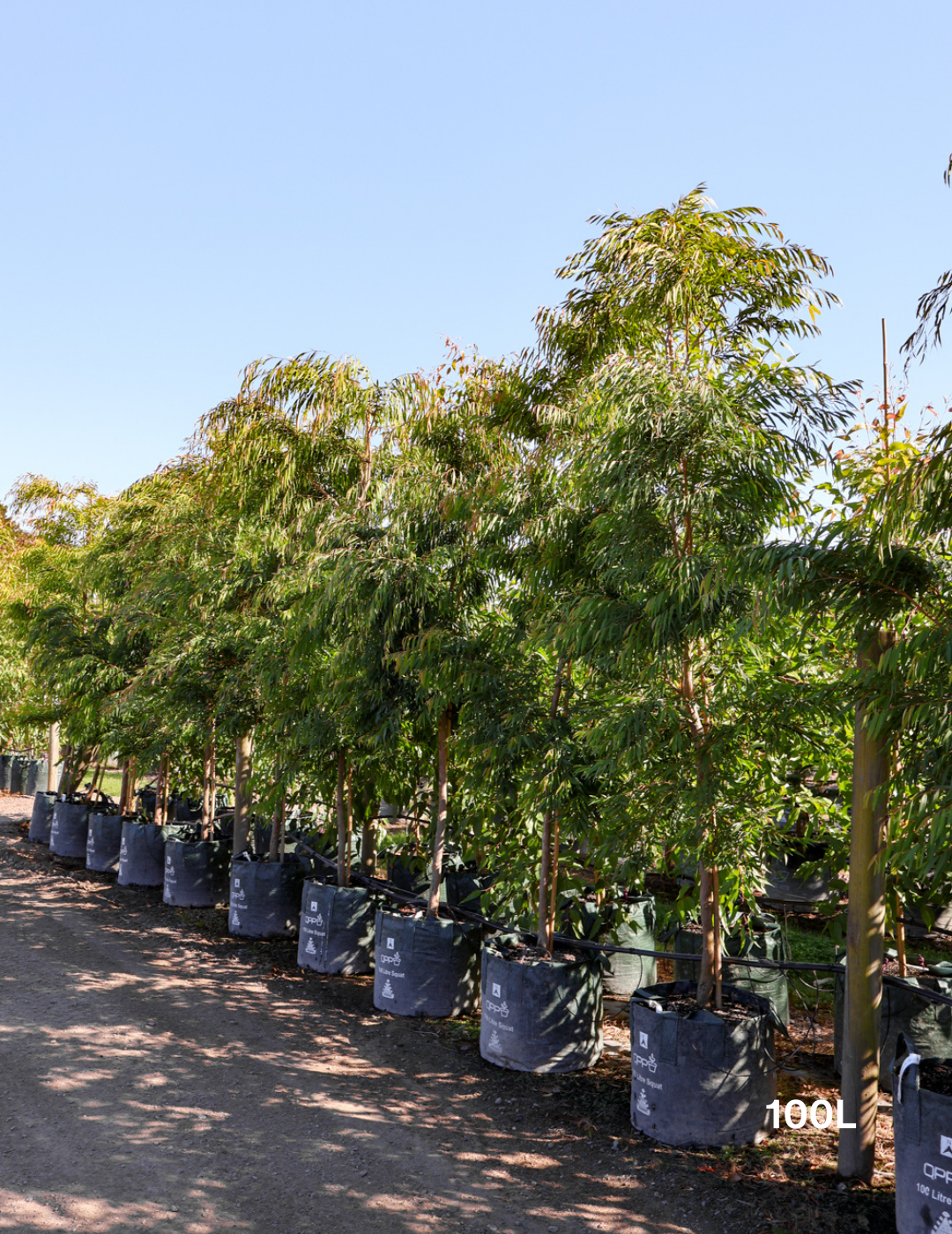
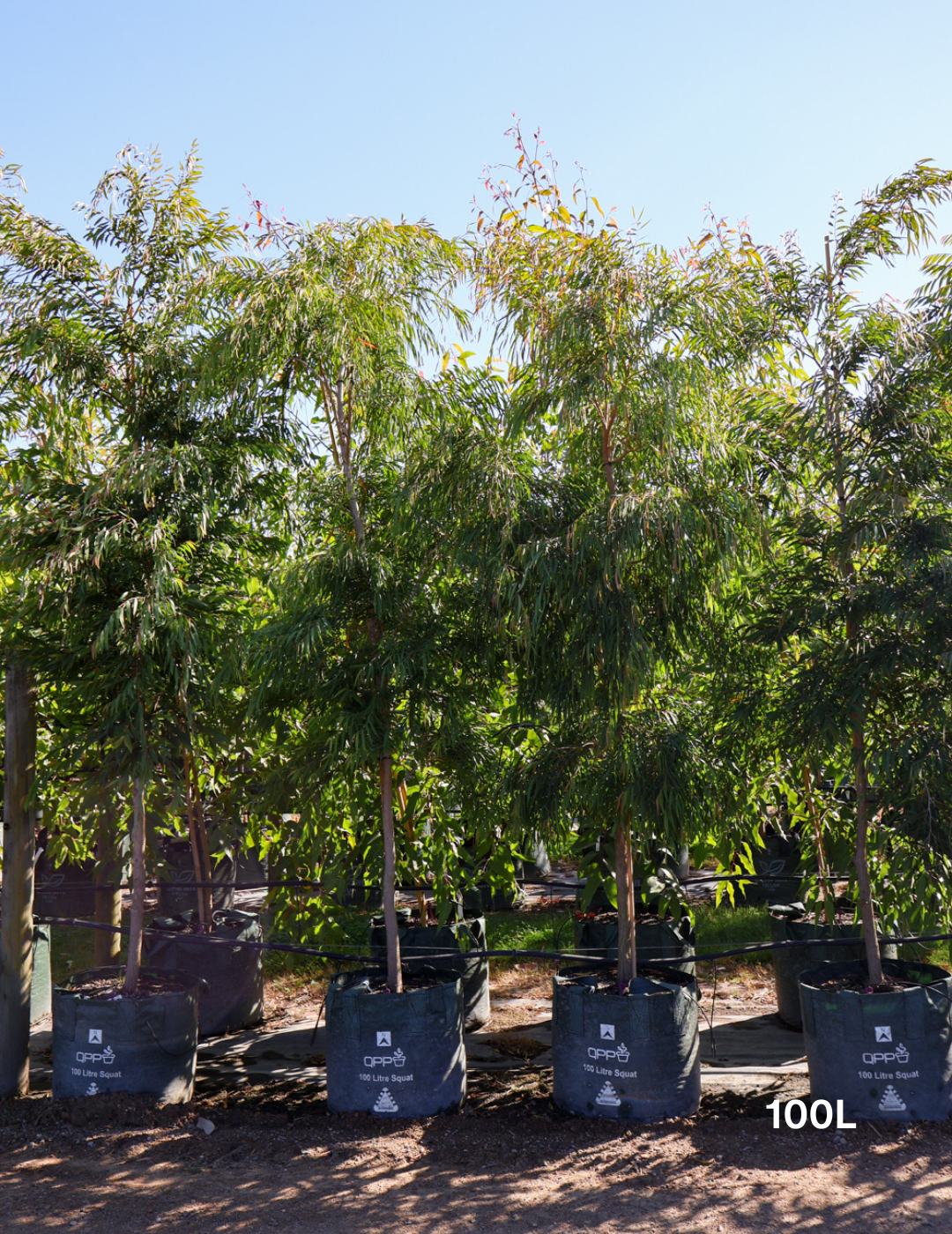
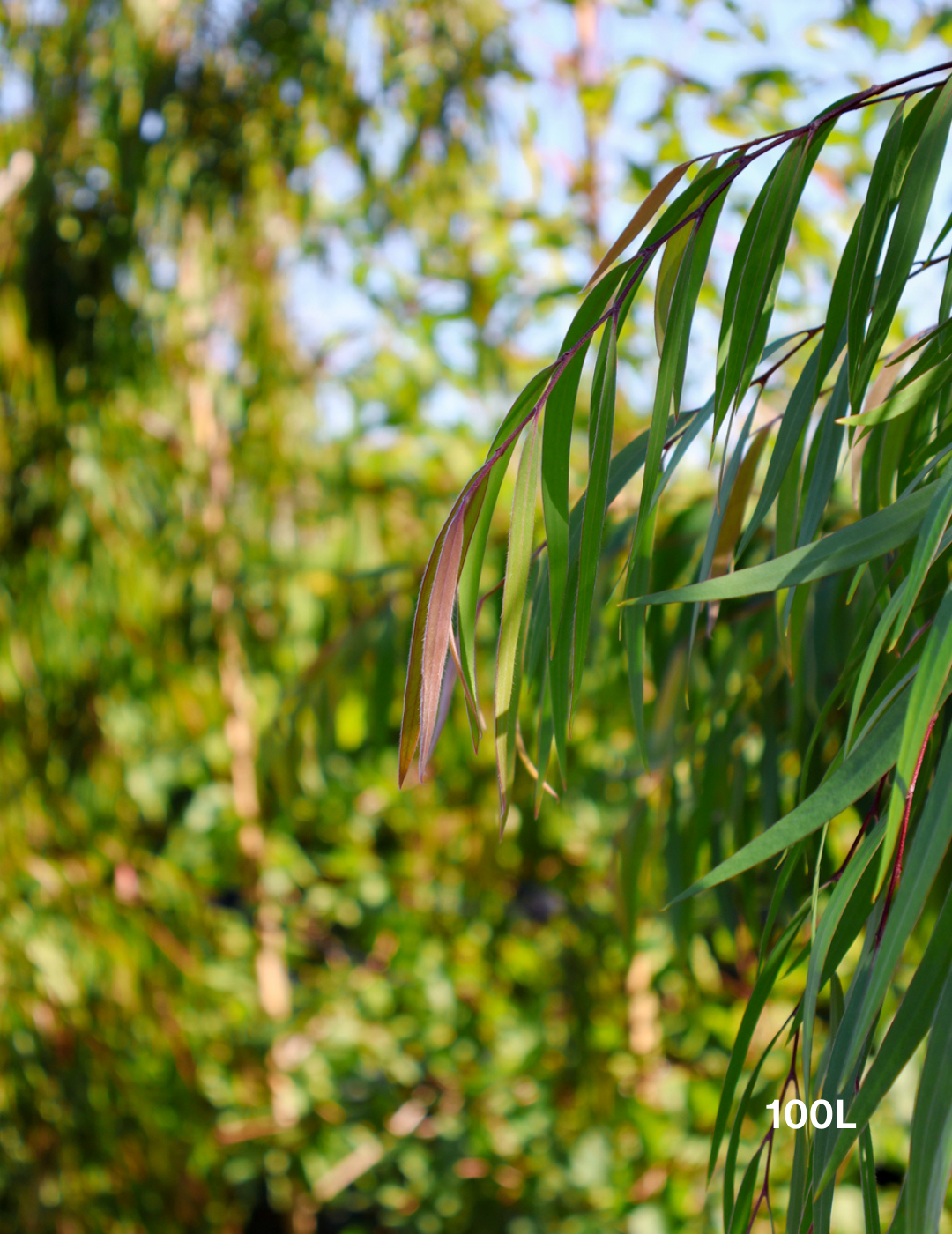
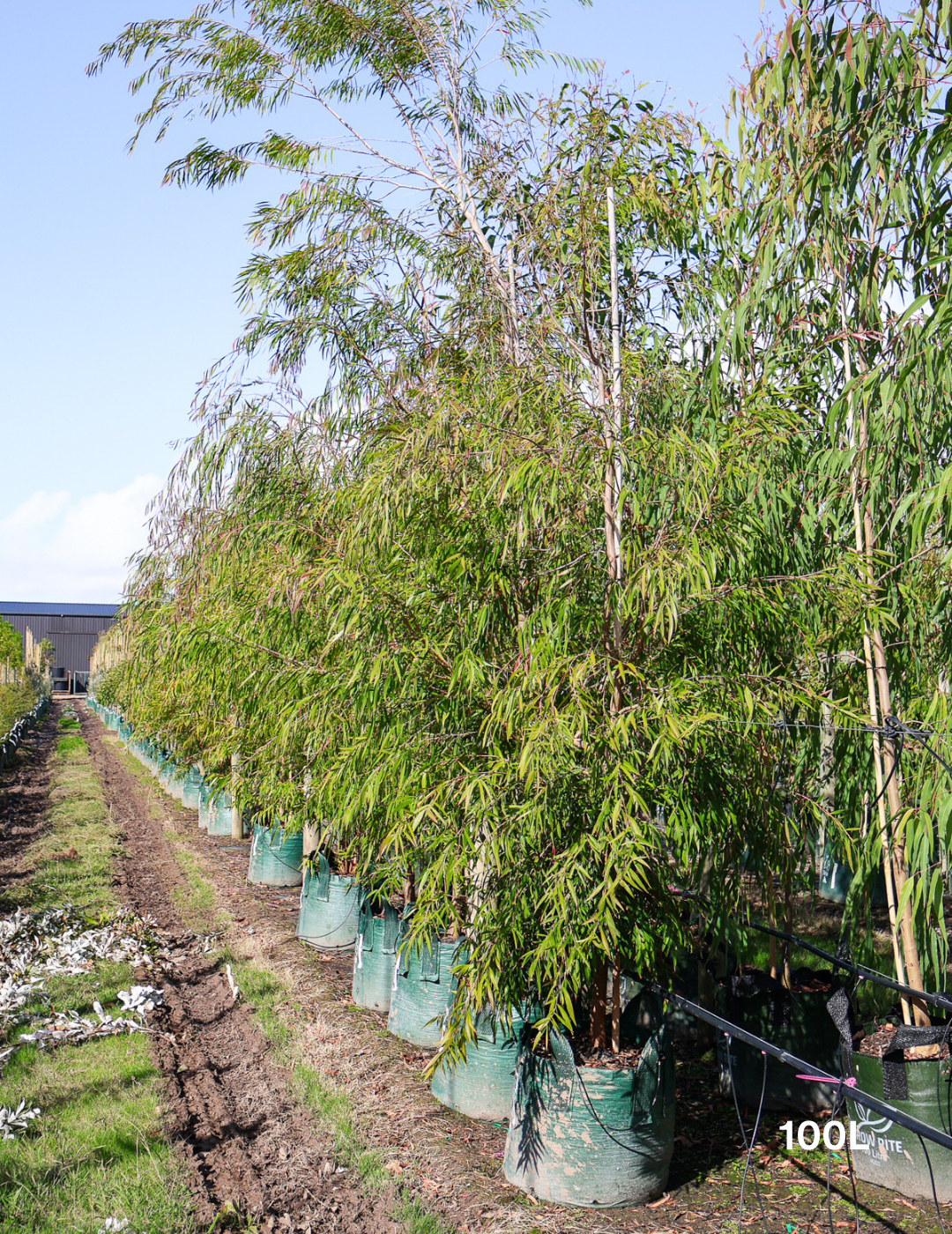
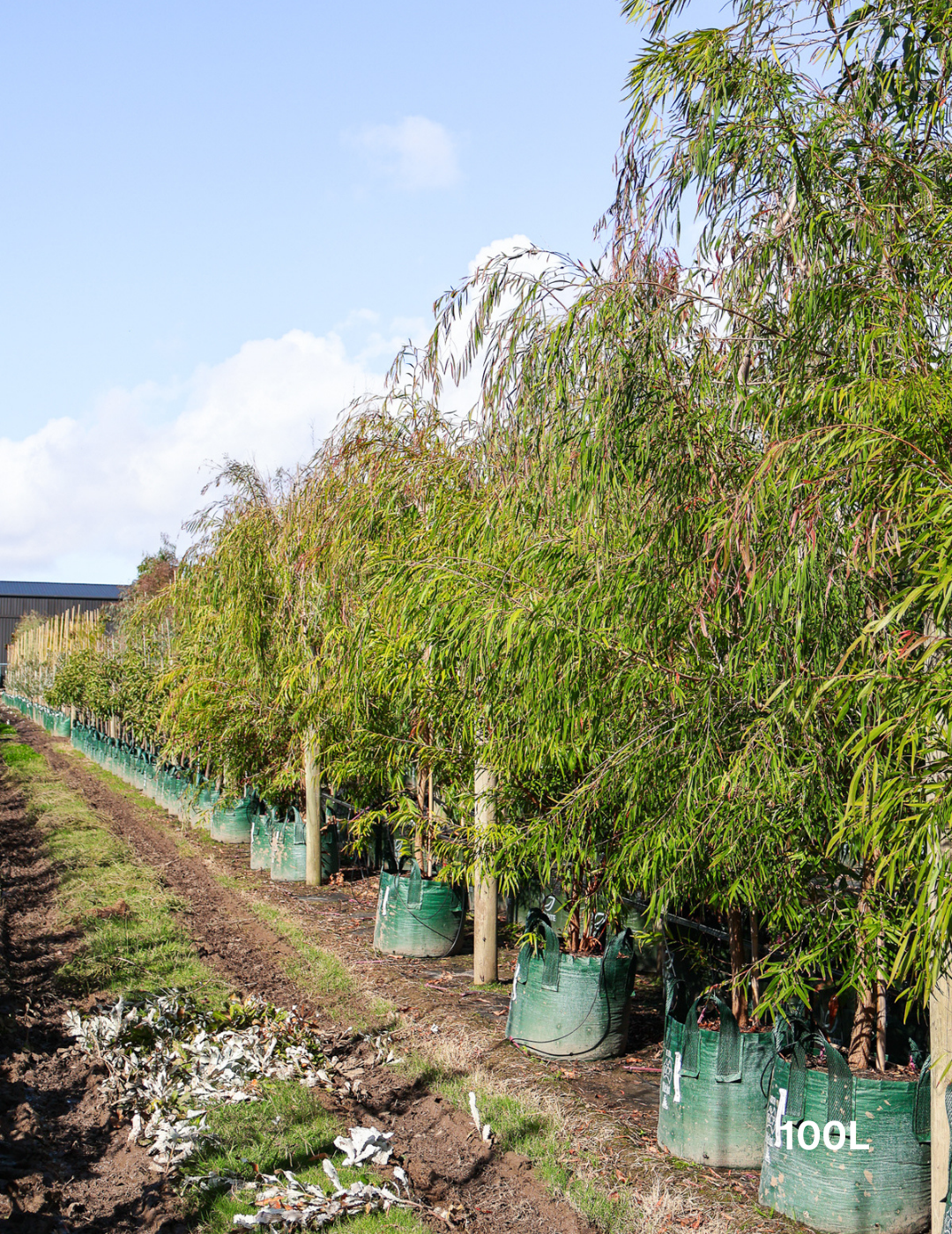
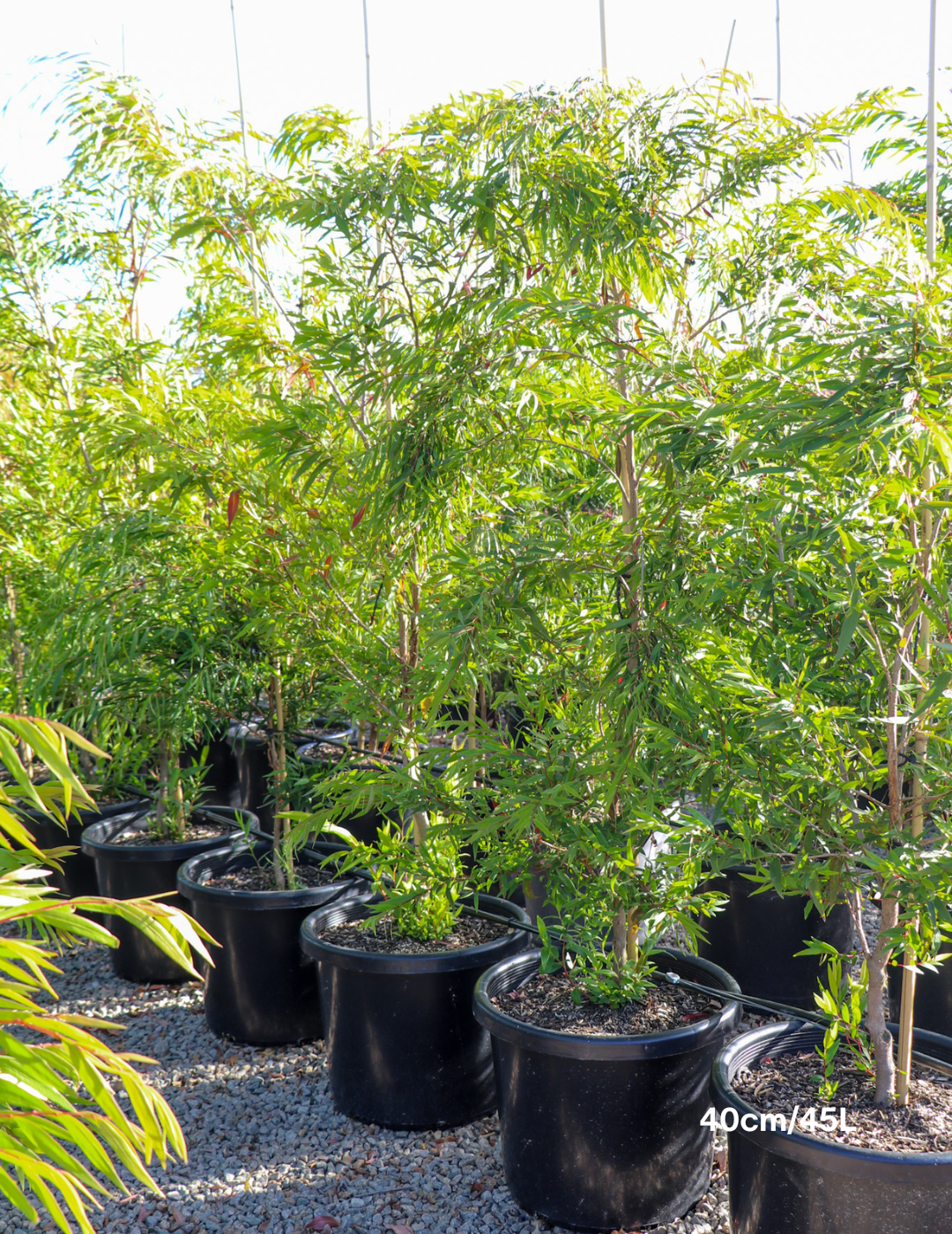
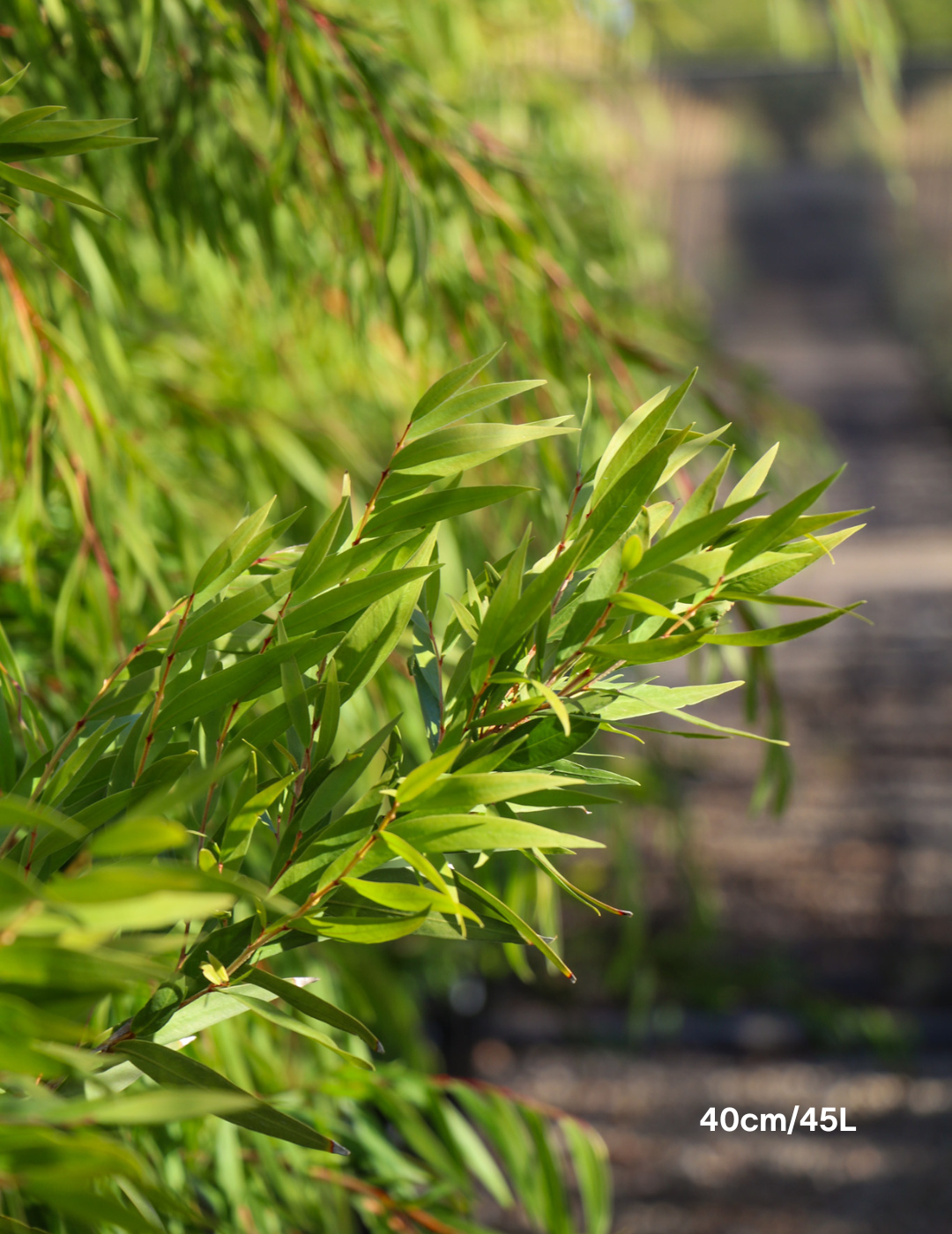
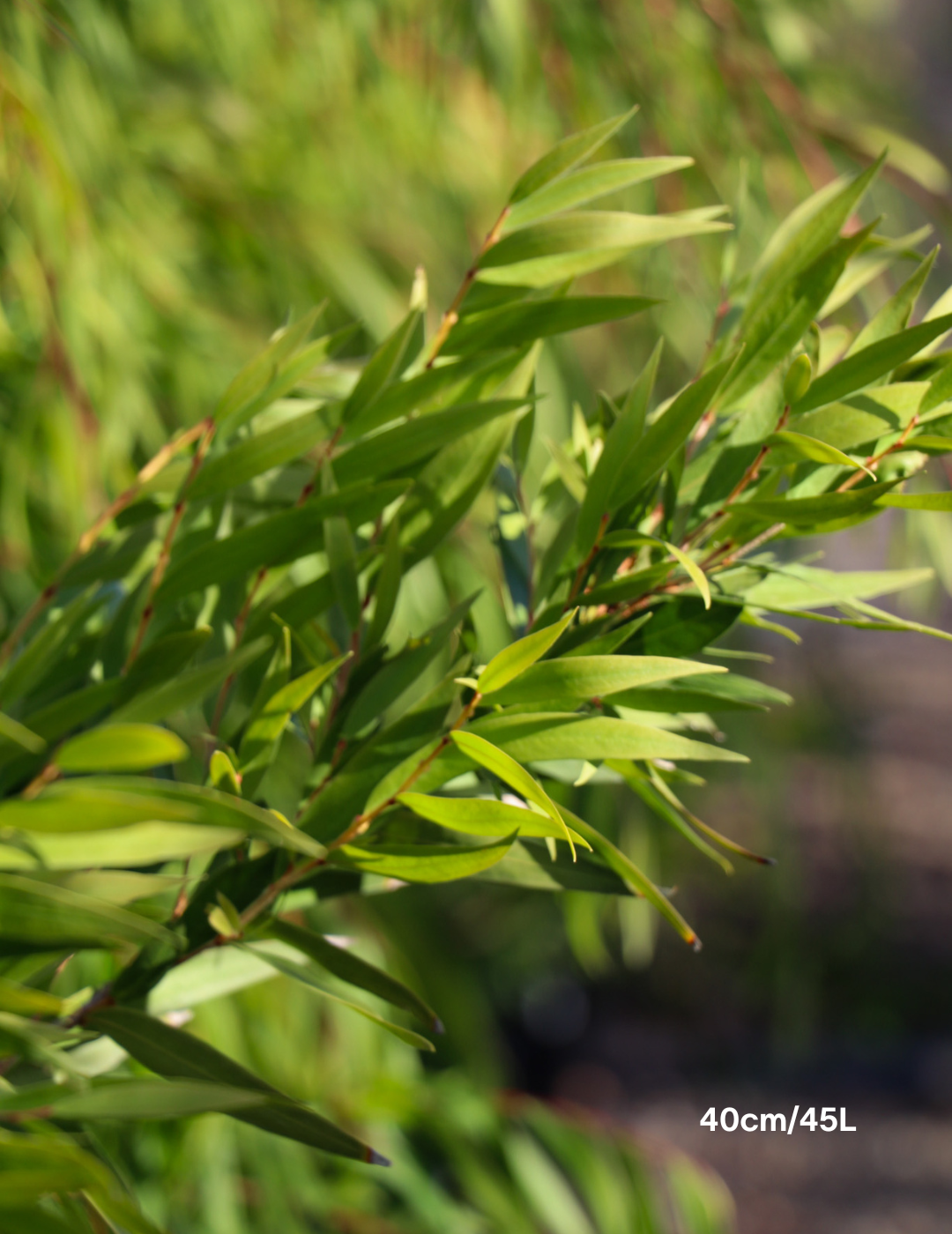
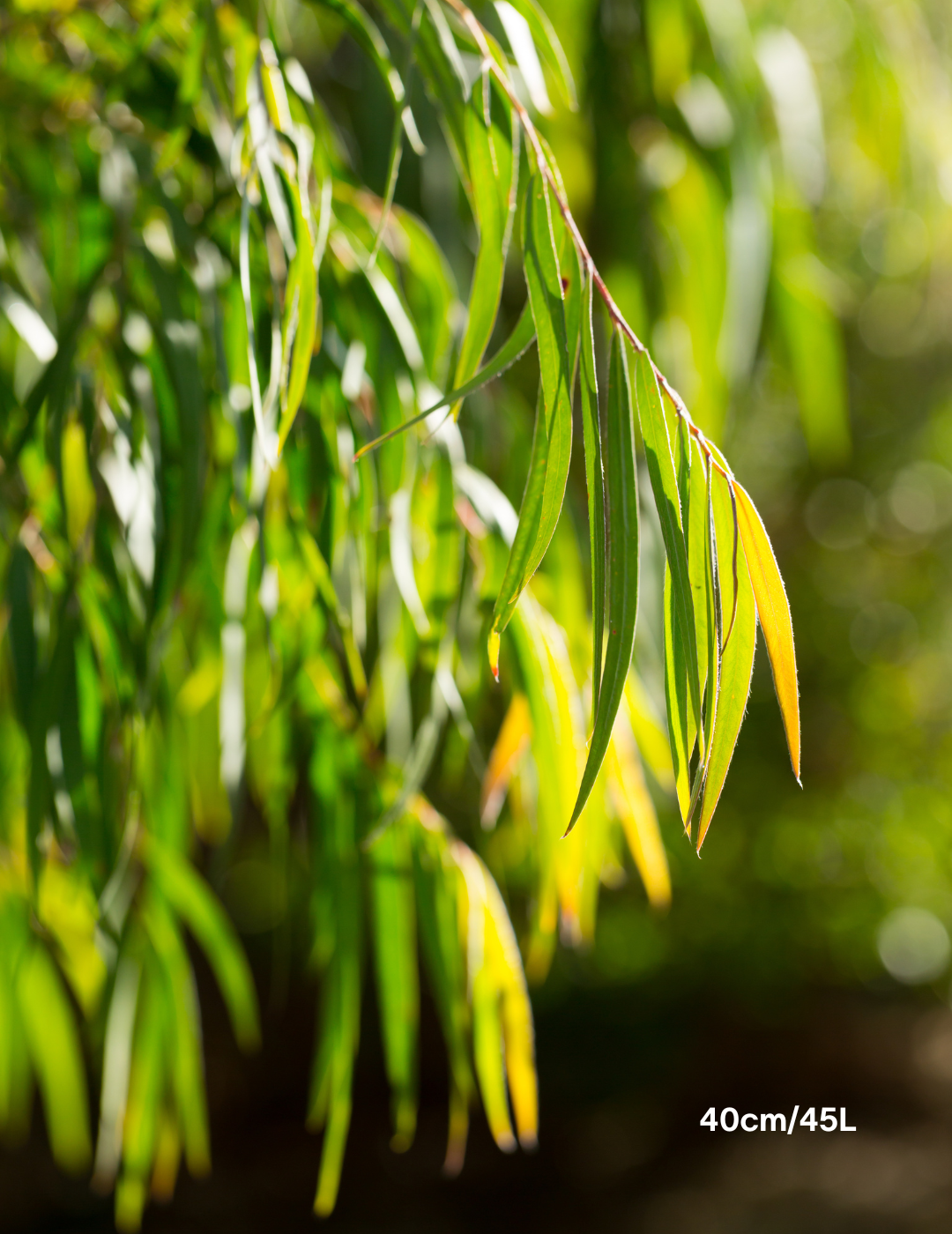
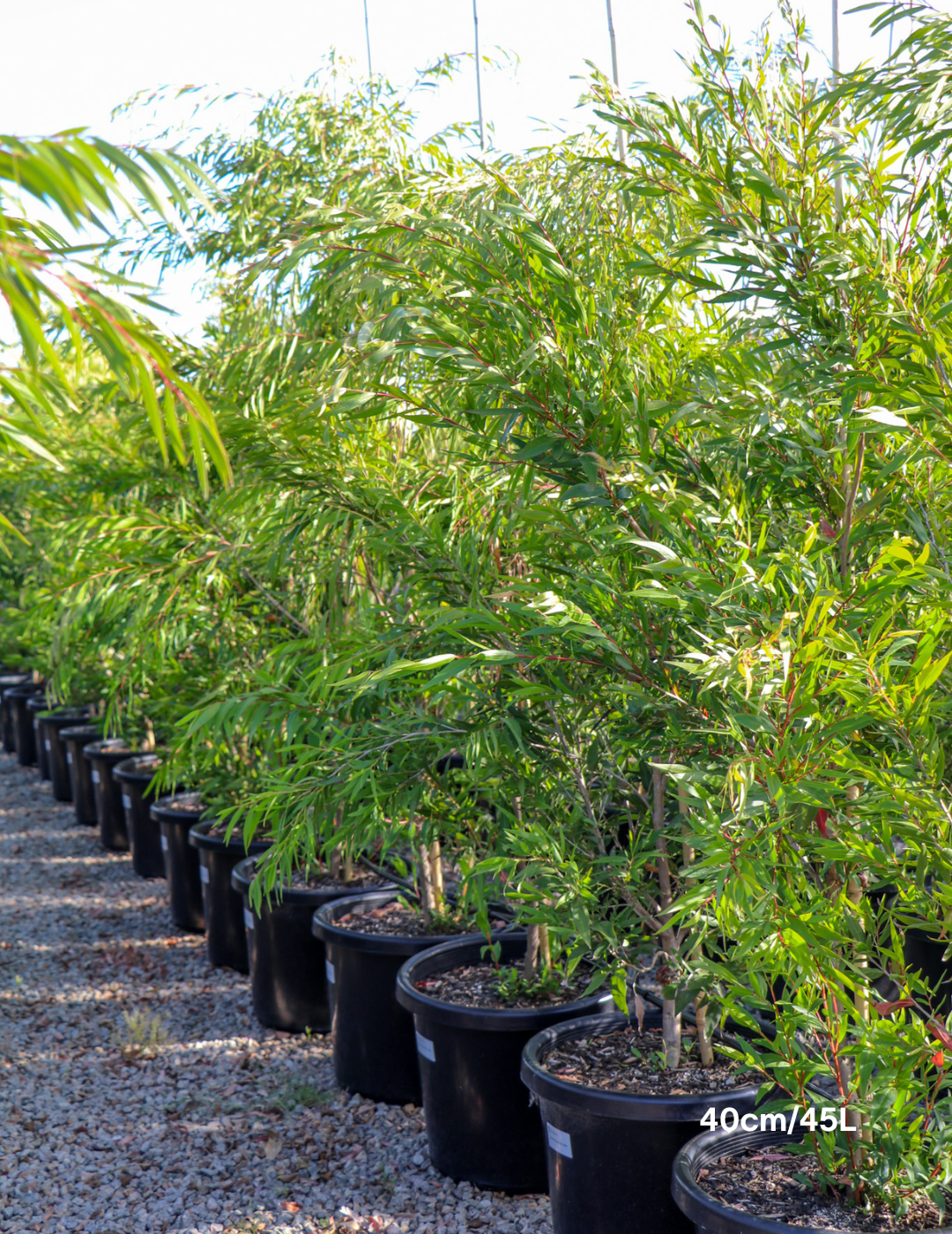
Agonis flexuosa
- Regular price
- $570.00
- Sale price
- $570.00
- Regular price
-
Learn About Your New Agonis flexuosa
The Willow Myrtle is a low-maintenance, drought-hardy Australian native, valued for its weeping form, aromatic foliage, and resilience in tough environments. Ideal for streetscapes, residential gardens, parks, and large-scale landscapes, this evergreen tree thrives in coastal conditions, high winds, poor soils, and extended dry periods, making it a top choice for urban and coastal planting.
Its narrow, lance-shaped leaves are dark green with a silvery underside, releasing a distinct peppermint scent when crushed, adding sensory appeal to any space. In spring and early summer, the tree produces clusters of small white flowers, attracting pollinators and beneficial insects, further enhancing its ecological value. With a graceful, cascading growth habit, the Willow Myrtle provides shade, structure, and movement, making it an exceptional feature tree for low-maintenance and water-wise gardens.
Key Features
Common Name: Willow Myrtle, Peppermint Tree
Mature Height (meters): 6-10m
Mature Width (meters): 3-5m
Spacing: 4-6m apart to allow for full canopy development.
Foliage: Narrow, lance-shaped, dark green leaves with a peppermint fragrance when crushed.
Flowering Period: Spring to early summer, producing small white flowers that attract pollinators.
Form/Habit: Tall, upright tree with a cascading, weeping habit.
Uses:
- Street tree or avenue planting – Upright growth with non-invasive roots.
- Garden feature tree – Adds height and structure to landscapes.
- Windbreak – Withstands coastal winds while maintaining dense foliage.
- Parks & public spaces – A proven performer in high-traffic areas.
Evergreen/Deciduous: Evergreen
Tolerates: Strong winds, moderate drought, and coastal conditions.
Drought Hardy: Yes, once mature.
Sun: Full sun to light shade.
Maintenance: Low; occasional pruning to enhance shape.
Water Requirement: Moderate; increased watering needed during prolonged dry periods.
Need Assistance For Your Next Project? Let Us Help.
Evergreen Trees Direct is Australia's unrivaled supplier of the highest quality advanced tree stock. Our extensive supplier network allows us to provide a one-stop shop for all your landscaping needs, no matter how big or small the project. We pride ourselves on exceptional service, ensuring a seamless experience from selection to delivery. Trust us to bring your landscaping vision to life with the perfect trees for any outdoor space. With our unrivaled selection and commitment to service, Evergreen Trees Direct is the top choice for landscapers, property developers, and garden enthusiasts alike.
-
 A layered, resilient coastal garden designed to withstand harsh salt winds and seasonal extremes. This Mornington Peninsula property features a cur...
A layered, resilient coastal garden designed to withstand harsh salt winds and seasonal extremes. This Mornington Peninsula property features a cur... -

Brighton Project
Presenting our recent project in Brighton, Victoria, landscaped by Jack Merlo Landscape & Design. This modern landscape features a variety of h... -
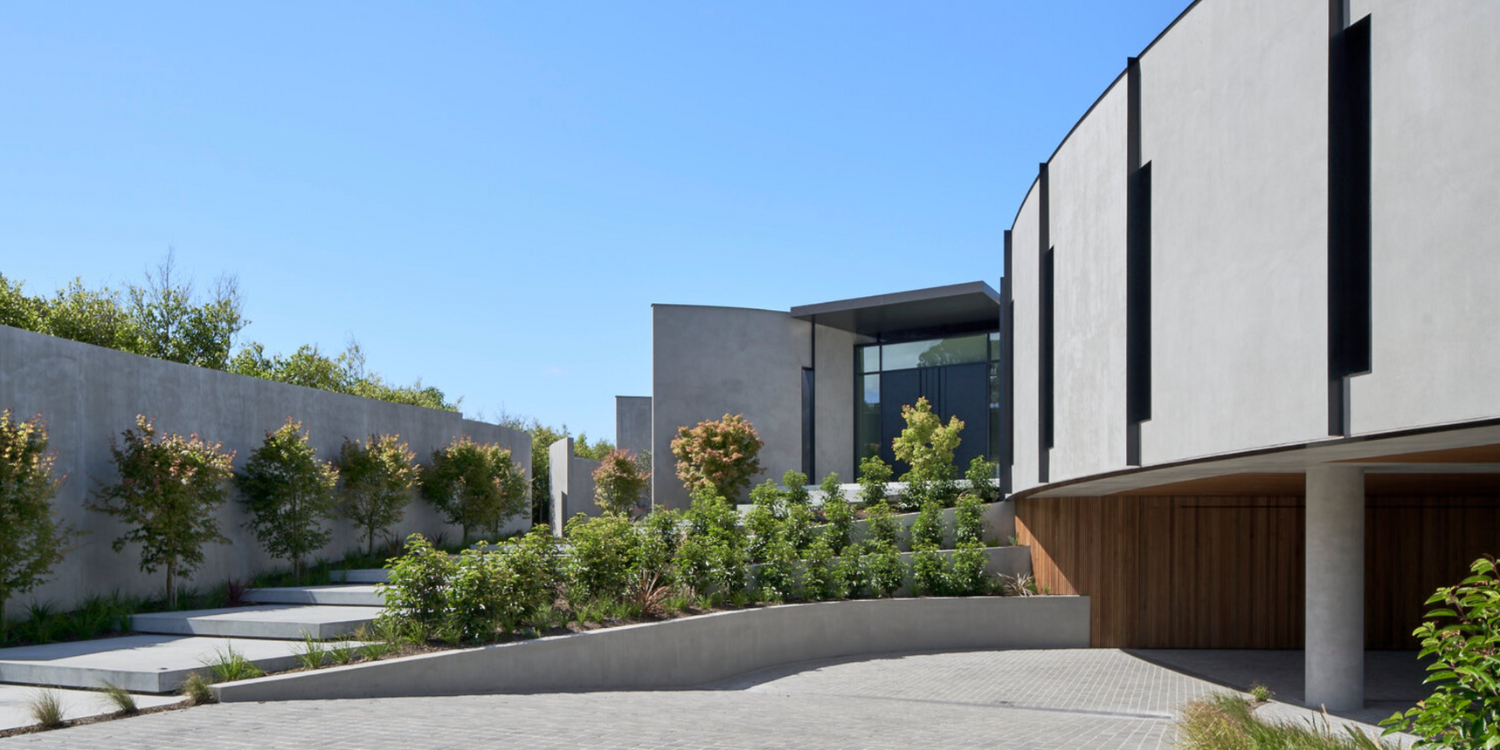
Horizon House, Flinders
Horizon House in Flinders blends nature with bold architectural design, using natural elements to enhance its modern aesthetic.Acer Palmatum (Japan...
